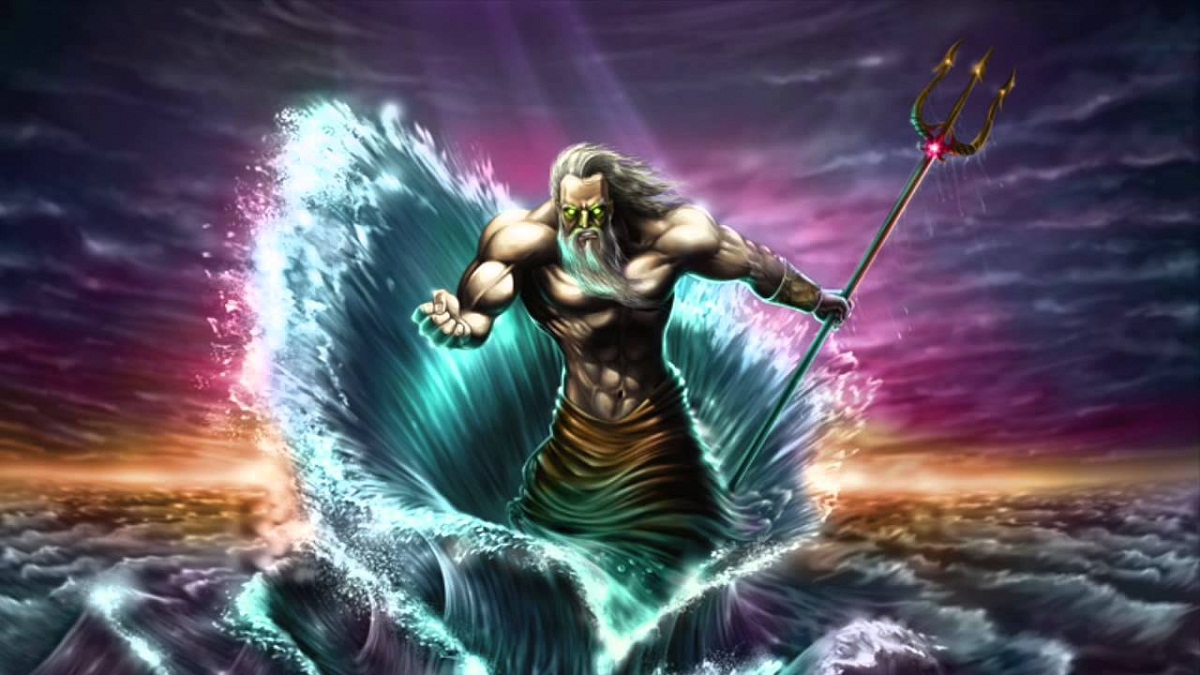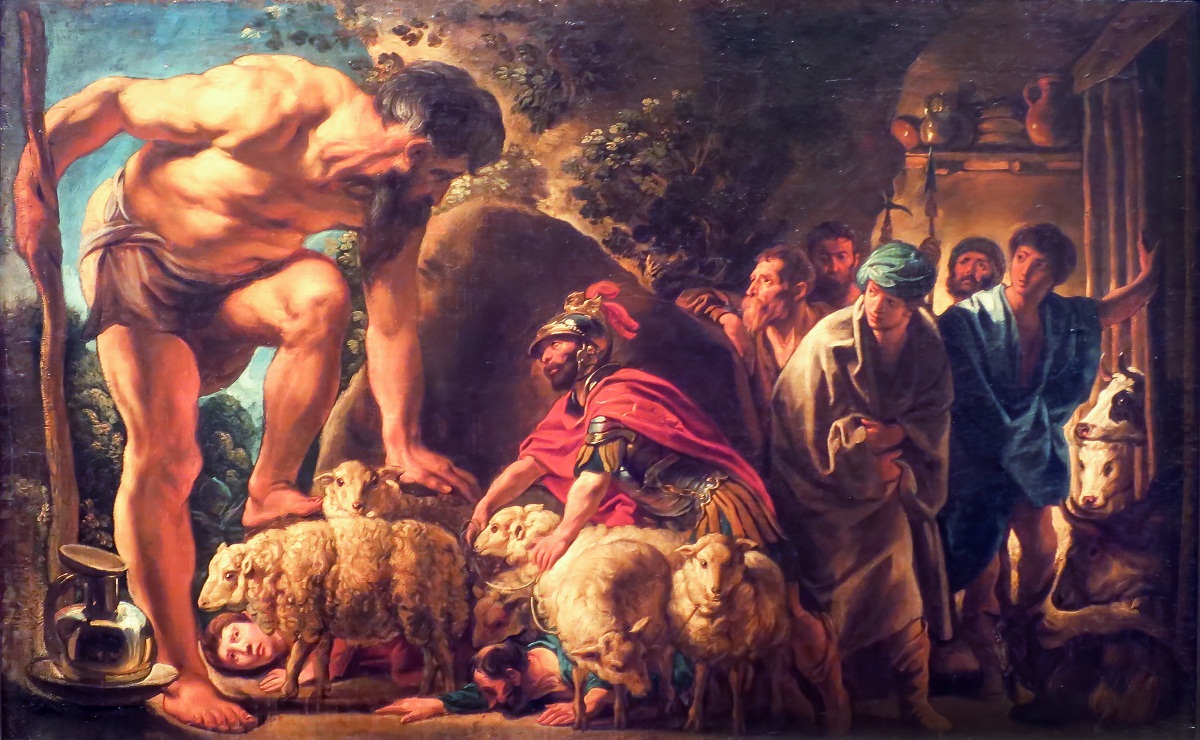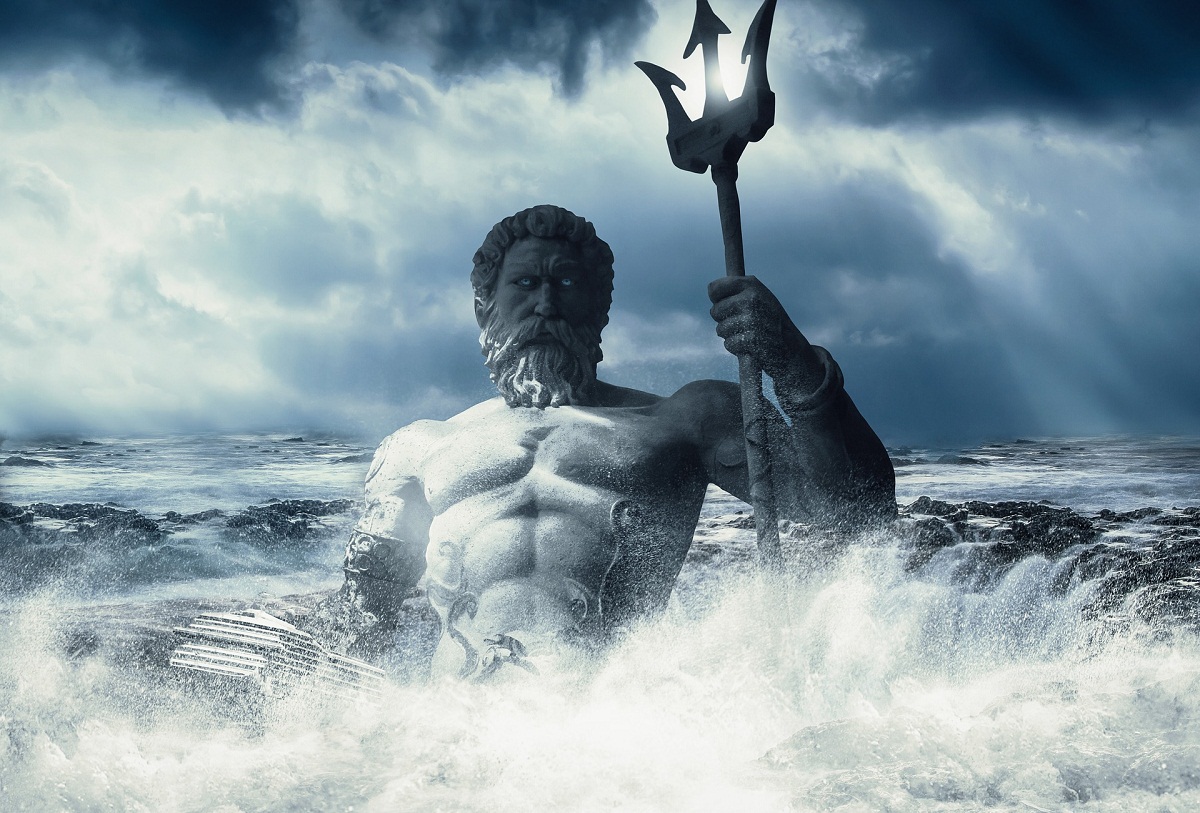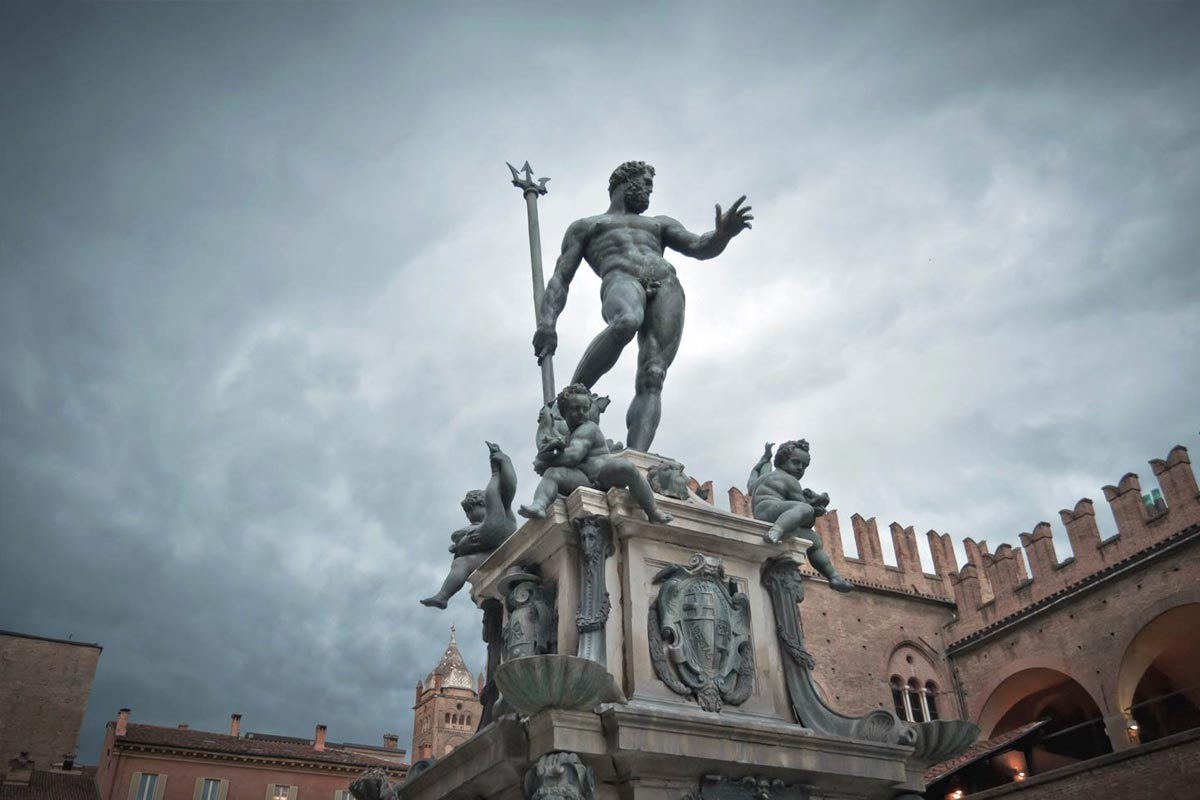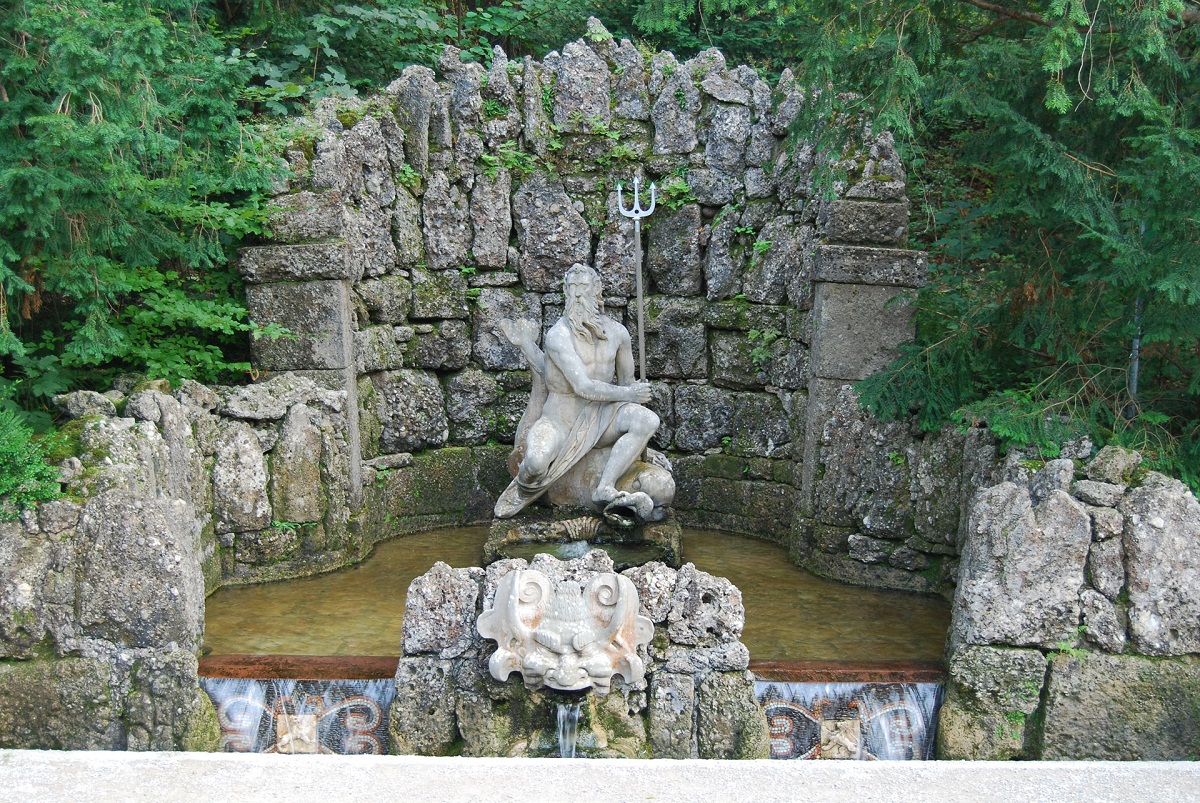Through this interesting post you will be able to know everything about the God neptune, its characteristics, attributes as well as other interesting aspects about this Roman deity to whom they made sacrifices in the month of July. Don't stop reading it!
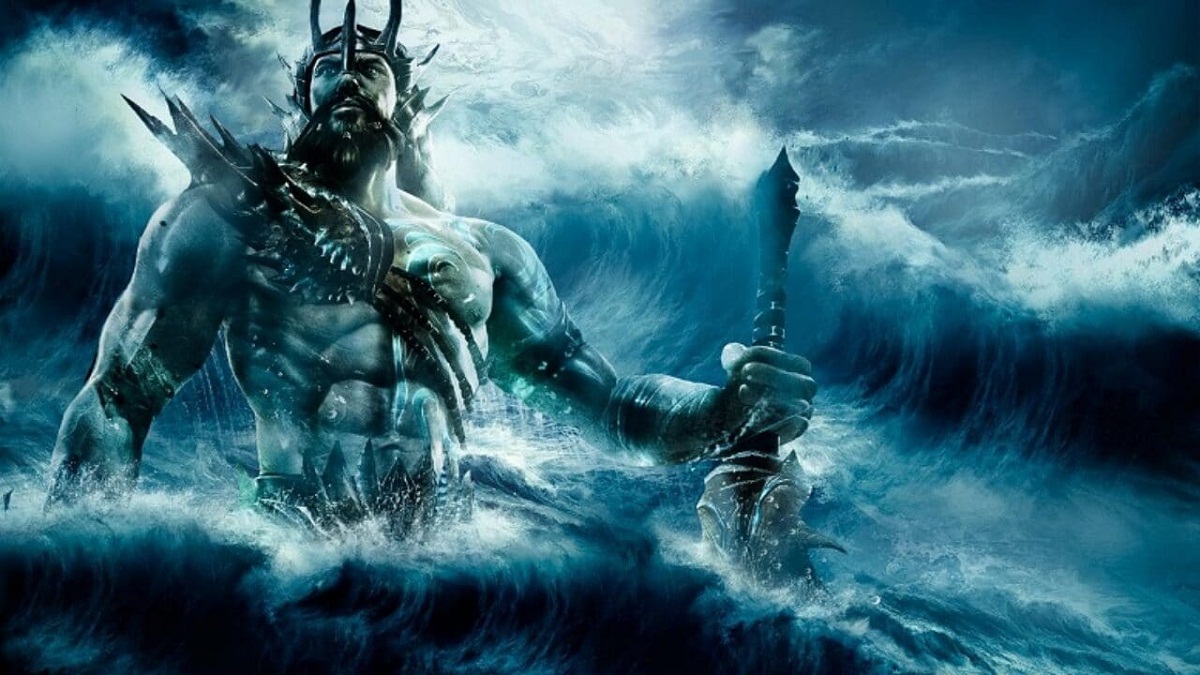
Who was the god Neptune?
The God Neptune was in Roman mythology in charge of the seas and water in all its aspects such as springs, lakes and rivers. He was revered by the Roman Empire as the father of living beings on Earth because through the element of water he achieved the fertilization of life everywhere.
In addition, the God Neptune was in charge of being the master and lord of horse racing, it was even thought in Roman mythology that this deity had created the horse itself, an example of his veneration being the sanctuary that was made in his honor very close to the Circus Flaminius.
Which was a race track for horses in ancient Rome where jockeys and horses raced. As for the God Neptune in Roman mythology being mentioned for the first time in the history of him around the year 399 BC he was the older brother of Pluto and Jupiter.
His magnificence tends to be associated with that of Poseidon, who was the Greek god of the sea, although he has a turbulent character. Several images of the God Neptune are observed among them as a man of strong and masculine appearance accompanied by a fisherman's spear that had three points.
In other representations, the God Neptune is shown as an imposing man with a beard, even in some images he is accompanied by fish or with some mythological creatures of the sea. His name in Latin means wet. He ruled the sea on beautiful white horses very similar to the foam of the sea.
Attributes of the God Neptune
Among the attributes that the God Neptune presents in the field of art, he is represented as a strong and imposing man with black hair and his clothing is blue or sea green.
It is sometimes found sitting in a beautiful snail car that is pulled by animals such as whales, horses and seahorses. Because his power is in all the seas and therefore he is the owner and lord of all the mythological beings that the sea hides.
He carries his majestic trident in his hands and is accompanied by mythological marine beings such as gods and goddesses of the sea as well as tritons and beautiful sea nymphs. The God Neptune was the owner and master of the sea, so in Ancient Rome it was believed that the earth was flat, so there were great surprises under the water.
In his trident at the lower end a cross is identified that symbolizes the essence of nature and the three points interpret birth, life and death, it is also said that they are related to the mind, body and spirit of people.
With the use of the trident, the God Neptune had an excellent ability to control the dominion of the waters. This tool was developed by the Cyclops before it took place in a confrontation between the Olympic athletes and the Titans.
You can see the effigy of the God Neptune in some ancient coins and medals where his figure is evidenced on top of a ship demonstrating that only he could preside over the seas.
Another of the attributes that are presented to the God Neptune is the dolphin that demonstrates its abilities in and out of the water, so it can be seen surrounded by these beautiful animals just as the bull represented it due to its voluptuousness and strength.
There were towns in ancient Europe that had no contact with the seas but still felt respect for the God Neptune since he could fertilize the land through the rains and his magnificence could be felt in the water of the rivers and lakes.
So it was believed that one of its attributes was fertility also in humans and animals thanks to the gift of the element of water.
Powers of the God Neptune
Because this Roman deity, the God Neptune, was responsible for the natural and supernatural events that surround the marine world, for which the inhabitants cried out to this deity to save their ships.
With his trident, the God Neptune had the power to shake the earth causing telluric movements as well as enormous storms, so he could destroy lands and flood territories, for which, by crying out for his favors, peace would return to Earth.
God Neptune has the gift of being able to control, create and manipulate the ocean or small drops of water, creating tsunamis and destroying entire cities. He manages this deity to breathe in and out of the sea being an excellent swimmer.
There was talk in Roman mythology about the gift of fertility in the God Neptune since the power of rain and cloudy skies was attributed to him, for which, thanks to his powers, the lands were fertile in food crops.
Origin referring to this Roman deity
As for Roman mythology, the God Neptune was the son of Saturn and Ops, who was Mother Earth, his brothers were Pluto and Jupiter and among his sisters were Vesta, Juno and Ceres. Saturn ate his children after they were born so the wife gave Saturn a stone to eat.
With the intention of removing the stone from his stomach, Saturn vomited and after that liquid the sons of Ops were released, these creatures united and defeated their father. After managing to overthrow their parents, the sons were in charge of taking control of the world, for which they divided it into three parts.
To the God Jupiter corresponded the heavens, to the God Pluto the underworld and to the God Neptune the seas due to its turbulent and violent character as the unpredictable nature of the waters.
The ancient Romans had no idea of the meaning of earthquakes because they did not have scientific knowledge regarding the movement of tectonic plates, so they assumed that earthquakes were caused by the temperament of the God Neptune.
Due to this, they tried to make offerings to the God Neptune to prevent his anger from increasing the earthquakes, since according to Roman mythology these movements and destruction came from the sea.
For the Roman culture, the vital element of water was of great importance. It was governed by the God Neptune, who in turn had a large entourage that accompanied him not only in the seas but also in the lakes, in the fountains and in the rivers, being the majestic undines, nymphs and naiads hence the great respect for these mythological beings.
In addition to taking care not to disturb the God Neptune, who with his turbulent temperament could whip the lands in just a few moments, they were jealous of the respect they should have given to this Roman deity.
Etymology regarding his name
The etymology of the God Neptune has been investigated and although its name from the Latin word translates as wet, the origin of this name is still unknown, although the conclusions indicate the derivations of its name with water and humidity.
It is even said that the name of the God Neptune can allude to fog and clouds due to the rain that is positive for harvest time.
The Romances of the God Neptune
According to Roman mythology, the God Neptune was married to the goddess Salacia who was in charge of salt water, being the similarity of the Greek Amphitrite.
From this union three children were born Benthesicymus who was the nymph of the waves then Rhodes who gave the island its name and Triton being the best known of them, just like his father has a trident which is a bastion with three points.
Regarding his image from the navel down he was a fish and from the navel up he was human so Triton was the male version of the sirens in the marine world he was the father of 3000 sirens and 3000 mermen.
His relationship with the water nymph
As for mythology, it is said that Amphitrite the water nymph was the wife of the God Neptune instead of the goddess Salacia according to the story told on the island of Naxos in the Aegean Sea, so it may be the same deity with different names.
So the God Neptune was totally captivated by the beauty of the nymph Amphitrite when he saw her dancing with her sisters on the island.
Due to this, he requested to marry her but the nymph rejected him by virtue of that answer, our deity decided to send a dolphin to convince the young woman to be the wife of the God of the seas because she had gone to the Atlas Mountains.
Due to the intelligence of this dolphin to get the nymph Amphitrite to accept being the wife of the God Neptune, he granted her a place in the Delphinus constellation as an immortal being, being able to observe her image in the northern sky near the equator.
Being one of the reasons why this nice little animal is represented as one of the favorite figures of the God Neptune since it allowed his marriage with the beautiful nymph.
It is commented in the Roman narrations that the God Neptune was a god of lesser level for the Romans and to whom they gave the credit of their victories in the sea was Fortunus but when listening to the legends referring to the God Poseidon of the Greek mythology a ascent to Neptune as God of the seas.
In view of the enormous power of the God Neptune to grant victories to the Roman Empire, temples and sanctuaries were built in his honor as well as offerings of great value with the intention of keeping this Roman deity in a good mood.
Well, as long as the God Neptune was happy, the seas would be calm and you could navigate on them, so in July they held festivals in honor of this Roman deity.
The name of the God Neptune is of such importance that horse racing was known by the designation of Neptune Equester that alludes to the equestrian word relating it to horse racing and in the year 1846.
It is decided to take the name of this Roman deity to name the planet in the solar system because when observed through the telescope its color is bluish, so its name remains a legacy today.
Relations with Medusa
According to Roman mythology, Medusa was a woman of exceptional beauty with beautiful, very bright golden hair, many gods desired her and she had not yet chosen her blessed beauty in marriage.
So the God Neptune took advantage of the beautiful young woman who was a priestess who was praying in the temple of Minerva who was the goddess of Wisdom and in the sanctuary he took the young woman without her permission.
The goddess Minerva was upset because they had not respected her sanctuary and decided to punish the young Medusa who had been outraged by the God Neptune so that her beautiful golden hair was transformed into snakes and from that day on a man who looked at her face would be transformed immediately in stone
Relationship with Clito
The God Neptune was captivated by the beauty of Clito so he used his great powers to place the land where he lived in a circle of water but provided with rich springs of fresh water and varied and exquisite foods.
From this union she became pregnant with male twins, the first pair was named Atlas or Atlante, thanks to them the Atlantic Ocean is derived. Then came the second pregnancy, giving birth to Gadiro and Anferes.
In the third pregnancy Evemo and Mneseo were born, then in the fourth pregnancy the twins Elasipo and Méstor were born and in the fifth pregnancy Azaes and Diaprepes were born.
His relationship with Toosa
She was a sea nymph who was the daughter of Forcis and Ceto, in addition to being sisters of the well-known Gorgons, she was one of the lovers of the God Neptune and with him she fathered the Cyclops Polyphemus.
With regard to this nymph, she represented the dangerous sea currents that the Romans feared and was in charge of surrounding the Aegean Sea reaching the eastern coast of Sicily, she was spoken of as a very beautiful mermaid but with a great character.
Children of the God Neptune
This Roman deity also had other children in addition to those born from his marriage to his wife, being Pegasus and Atlas, who were born from Medusa after having outraged her.
Other of the sons of the God Neptune were great giants such as Ephialtes, Otus who was killed by the Gods Diana and Apollo, there was also another giant named Polyphemus who was blinded by Ulysses himself.
There was another son named Halirrhothius, his life was taken by the God Mars, in addition to seven children with Halia, one female and six males. These dared to insult the goddess Aphrodite for which the deity made them go crazy.
He was even with the goddess of Agriculture named Ceres, who was one of his sisters, and although the goddess tried to flee by transforming into a mare, the intrepid God Neptune became a stallion horse, for which they had sex, giving birth to their son named Arion. that it was a horse.
As can be seen in Roman mythology, not all the children of the God Neptune were human, since the long-awaited golden fleece was his son, since it was born from the union between this Roman deity and Theophane, since she was transformed into a sheep and he in an act of lust. turned into a ram.
Other of his children were Chrysaor and Pegasus who were born from the neck of Medusa when she was beheaded by Perseus, because you must remember that the God Neptune outraged her in the sanctuary of Minerva.
The god Neptune and the minotaur
According to mythology, the God Neptune sent the king of Crete a beautiful white bull to be offered to Neptune himself in the month of festivities in his honor, but for the king it seemed like a beautiful animal so he decided not to kill it and leave it to improve the breed of their cattle.
Instead of giving it as an offering, he placed an earthly bull believing that the God Neptune would not realize this deception that the king had decided to do, believing that he had won against the Roman deity.
This was an indignation for the God Neptune so he took the idea to call the goddess of love and ask her to make the queen fall in love with the bull so the queen gave birth to the famous Minotaur.
Myths or legends of the God Neptune
After the battle with the giants, the God Jupiter had managed to overthrow his father Saturn as ruler, and these Roman deities decided to divide up the Earth in the following way, Jupiter appropriated the heavens.
The God Neptune was in charge of governing the seas and Pluto took over the underworld. Legends comment on the great temperament of the God Neptune, for which he is the cause of oceanic storms and earthquakes.
Among the legends of the God Neptune, it is commented in Roman mythology that this deity was mounted on a beautiful chariot that was carried by beautiful white steeds and on other occasions by dolphins and in his hands he carried a very valuable tool that just by hitting the ground with she shook the earth.
This valuable tool was the trident for the God Neptune whose power made water sprout where he decided according to Roman mythology, so the inhabitants who were near places where he was surrounded by water had to offer them offerings to calm his anger since he was a god. very moody.
It is said that in the depths of the sea is his beautiful golden castle where he lives with his wife and children and the other mythological creatures that are protected under his power.
For Roman culture, it was of paramount importance to keep the God Neptune in a good mood because a single outburst of anger on his face caused violent earthquakes that could destroy populations, since he was a deity troubled by emotions.
Due to this, the Roman culture avoided provoking the God Neptune because this deity was in charge of supporting the earth so that it would not sink into the waters and this god was the architect of the various forms of the coasts, bays, cliffs and beaches. for he unleashed his fury by hitting the earth with the waves.
Shrines in honor of the God Neptune
There were two temples in honor of the God Neptune in the city of Rome, the first of which was very close to the circus named Flaminio, built twenty-five years BC. There was a sculpture in his honor by the marine group named Scopas.
It was a racecourse where horse races were held and the second sanctuary was located in the Basilica of Neptune, very close to the Roman pantheon. This beautiful temple was created by the statesman named Marcus Vipsanius Agrippa.
With the intention of being able to celebrate the victories they made after having traveled distances by sea in Roman ships specifically in Actium.
In addition, there is evidence of a third sanctuary in honor of the God Neptune that was found on the Palatine and Aventine hills where it was said that a freshwater stream existed thanks to the powers of the Roman deity.
It is evidenced in the songs of Homer specifically in the Odyssey that the God Neptune was in charge of slowing down Odysseus' return to Ithaca after the Trojan War by causing his ship to be shipwrecked in the sea.
The religious festival Neptunalia
For what was celebrated in the month of July, some festivities were held in the name of the God Neptune known as Neptunalia, which is celebrated on July 23 of each year to take its waters to irrigate the dry lands in the hottest season.
In this period of time, a large number of populations built shelters taking advantage of the branches of the trees. In addition, in these religious festivities granted to the God Neptune, visits were made to the forests to be able to drink spring water with the intention of reducing the heat of summer.
Others were in charge of making wine to drink it in these ceremonies in honor of the God Neptune, since there were no restrictions on these activities, since both men and women enjoyed making offerings without any inconvenience.
It is also said that during the festivities in honor of the God Neptune, work was carried out in the forests to accommodate the land for when the rain that the Roman deity would bring after the festivities arrived.
In these festivities, beautiful bulls were offered to the God Neptune and such was the number of people who went to make offerings to this Roman deity that small huts were built so that people could rest and get a little shade during the religious festivals in honor of the roman deity.
Representations in his honor
The god Neptune, due to its importance in Greek mythology, various artistic representations were made during the Roman Empire, among them songs, operas, representations in theaters, statues, paintings or artistic paintings as well as mirrors made of bronze can be highlighted.
Thanks to the investigations carried out, an effigy made in marble in honor of the God Neptune was found, which was found in a river that is very close to the city of Arles of the French nation, it is estimated that it was made in large proportions on the Roman deity. and dates from the beginning of the fourth century AD
The Etruscan people did not escape the offerings made to the God Neptune, one of them being the gem that demonstrates the power of the Roman deity by striking the ground with his trident, demonstrating his great character.
If you found this article interesting, I invite you to visit the following links:

